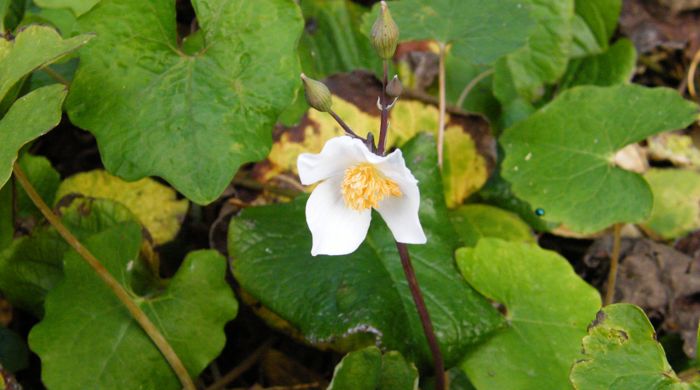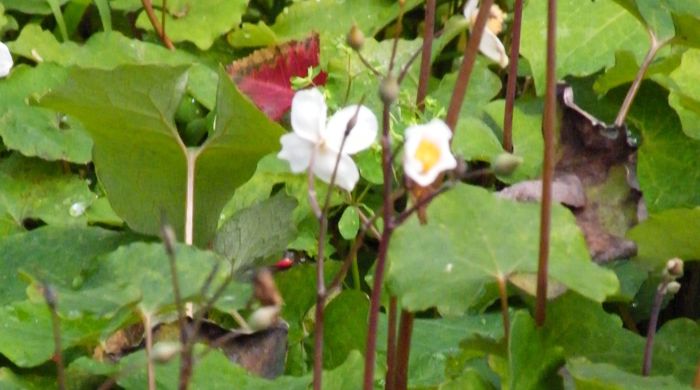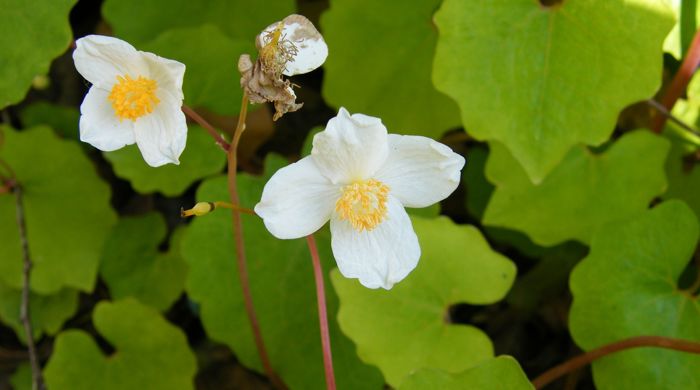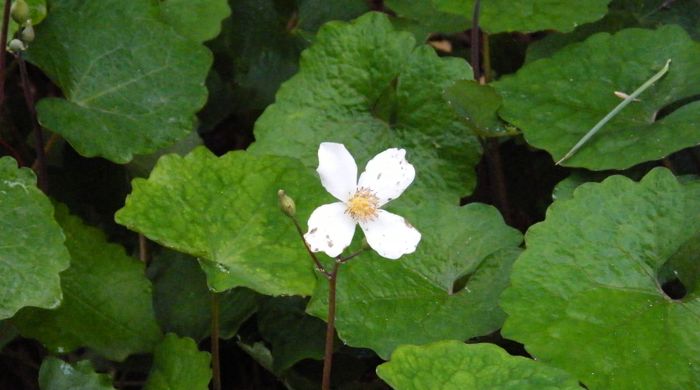Eomecon chionantha
Snow poppy
Also known as:
Chinese woodland poppy, Chinese bloodroot, dawn poppy
Family: Papaveraceae
Origin: China
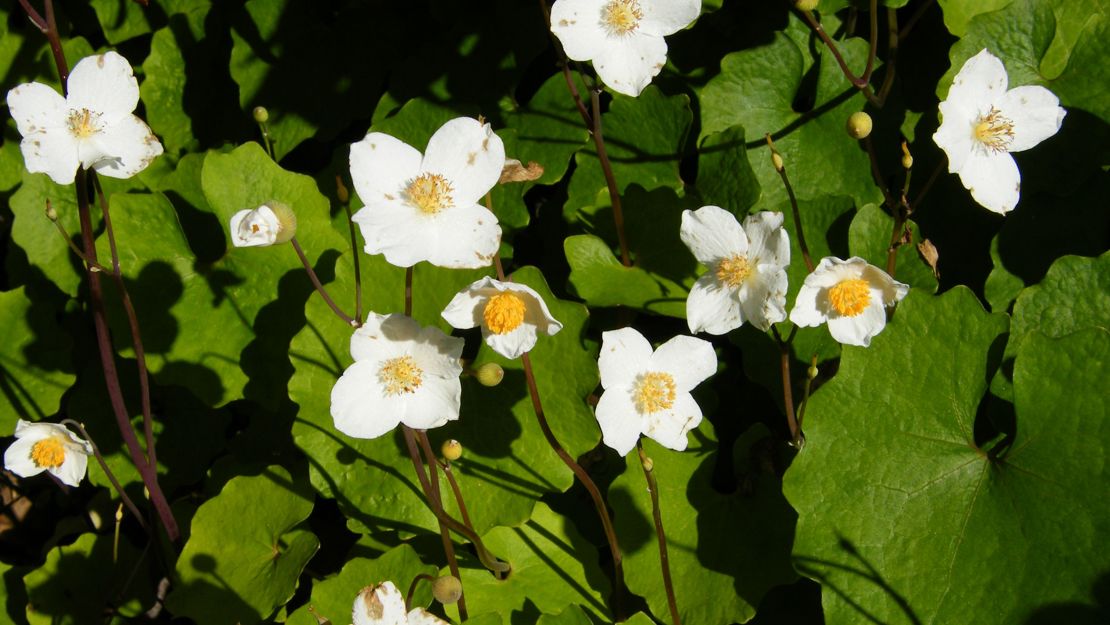
Regional Pest Management Plan (RPMP) status
- National Pest Plant Accord Species
- Whole region — Sustained control
General description
Low growing perennial herb. Stems ooze orange sap when crushed. Leaves are small, oval, heart-shaped, leathery and scalloped. Flowers are four-petalled and white/yellow with golden stamens.
What you need to know
To help protect our environment:
- You must not breed, distribute, release or sell snow poppy. As snow poppy is a National Pest Plant Accord species, these restrictions apply within the Auckland region and across the whole of New Zealand.
- You must not plant snow poppy within the Auckland region, unless you are transferring an existing plant on your land to another location within the boundaries of the same property.
- You must destroy any snow poppy on land that you occupy if it has been planted in breach of the above rules and you are directed to do so by an authorised person.
Habitats
Forests, moist soils.
Dispersal
Vegetative spread from rhizomes, stem and root fragments. Human-mediated dispersal through dumping of garden waste. Possibly spreads through seeds.
Impact on environment
Forms dense mats, smothering native vegetation and preventing native seedling establishment.
Control
Site Management
Follow up treated areas 3 times per year. Encourage natural regeneration of native plants or replant treated areas where possible after 2-3 treatments to establish dense ground cover and minimise reinvasion.
Recommended approaches
Physical control
Method: Dig out.
Plant parts requiring disposal: All parts.
Disposal options: Remove to greenwaste or landfill.
Biocontrol
Biocontrol is currently not available for this species.
Community agrichemical control recommendations
No qualifications: Foliar spray with 200ml glyphosate green per 10L of water.
Certified Handler/Experienced agrichemical user: Foliar spray with 200ml glyphosate green per 10L of water and 10ml penetrant.
Caution: When using any herbicide or pesticide please read the label thoroughly to ensure that all instructions and safety requirements are followed.
